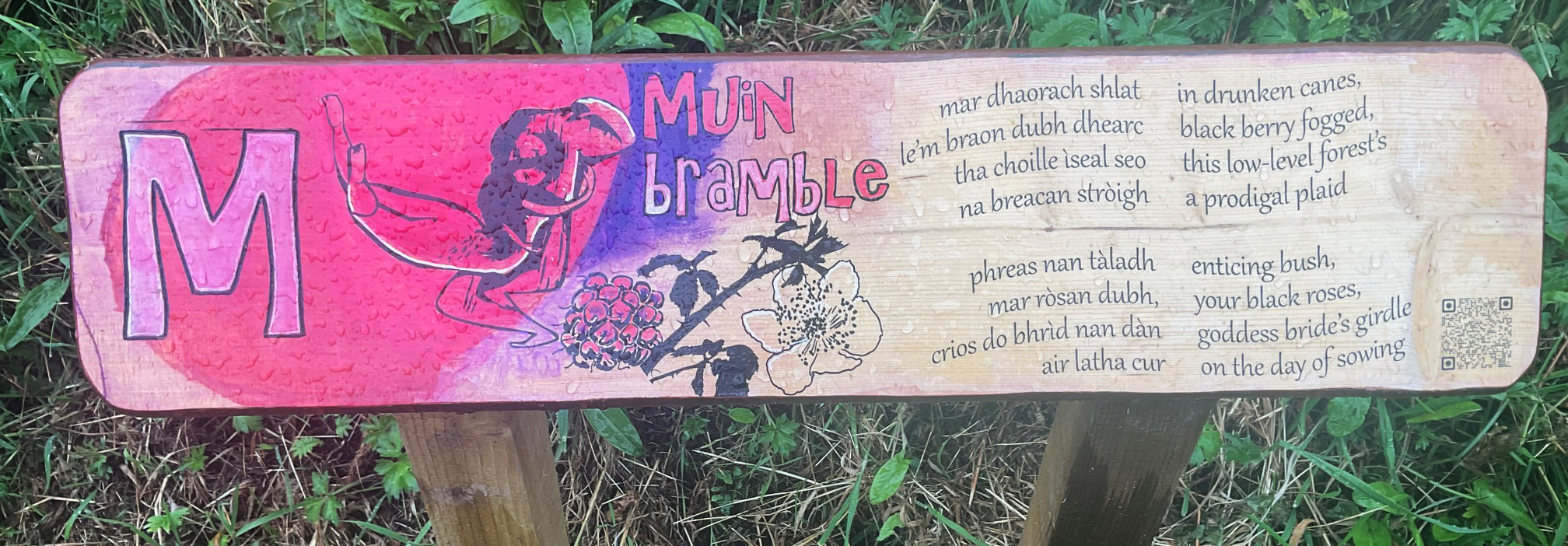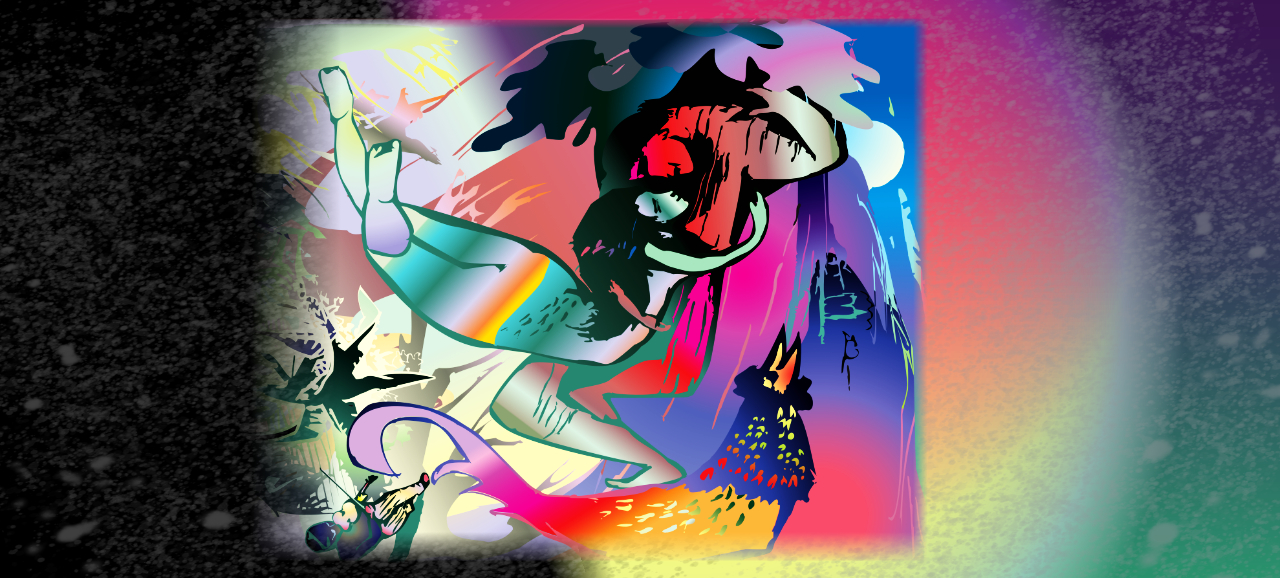
B L N F S H D T C M G P R A O U E I


mar dhaorach shlat
le’m braon dubh dhearc
tha choille ìseal seo
na breacan stròigh
na raip air gnùis
an iongnaidh òig,
de shùgh cho sileach ri
eas mear nach traogh
ged nach b’ann còir
do bheannachd sguilb,
mar làmhan fuar an uilc,
tha fial na d’ luchd
phreas nan tàladh
mar ròsan dubh,
crios do bhrìd nan dàn
air latha cur
in drunken canes,
black berry fogged,
this low-level forest’s
a prodigal plaid
smear on the face
of youthful wonder,
juice as fluid as
unquenchable bright streams
though your welcoming thorns,
(cold hands that hurt)
may not be kind,
your freight is profuse
enticing bush,
your black roses,
goddess bride’s girdle
on the day of sowing
Although not a tree, the origins of Muin belong with the vine, which is strictly a shrub or small tree. Necessarily, the vine became transposed to bramble, when transplanted from Greece to Britain. The flowers of bramble have five petals and are rose-like white or pink, 2-3cm across, that appear from June to August, followed by the familiar blackberry fruit.
Found in hedgerows, scrub, heathland, woodlands, and wasteground, brambles are thorny plants of the genus Rubus, and the name, bramble, refers simply to the fruit of any such plant, which include the blackberry and raspberry. The word originates from the German bram-bezi, as do brombeere and the French framboise. Bramble thrives in most soils and is able to grow in the sun or in partial or full shade. A bramble bush has a distinctive way of growing, sending its long, arching canes upwards from a perennial rootstock each spring.
Most species are important for their conservation and wildlife value in their native range. The flowers attract numerous nectar-feeding butterflies and hoverflies, and important food plants for their larvae. Birds, especially blackbirds, and various mammals feed on the nutritious fruits in autumn.
The canes have a two-year 'life span' and produce leaves on their first year shoots that are compound and palmate, with 5 - 7 leaflets. In the second year, lateral shoots develop which bear the flowers. The leaves on these lateral shoots are slightly smaller, and have 3 - 5 leaflets. Although they dont flower or set fruit until the second year of growth, all types of bramble bear edible fruit, and most have recurved or else hair-like thorns. Their fruits are aggregate, with many small units - or drupelets - to each fruit. In some cases the flower receptacle is elongate and part of the ripe fruit.

Sometimes planted amongst hawthorn in hedges to help bind the whole together and make a stronger barrier. Robins, wrens, thrushes, blackbirds, warblers and finches all nest in bramble and small mammals use it for protection from predators. Many moths (including buff arches, peach blossom and fox) lay their eggs on bramble for their larvae to feed on. The hooked thorns, as well as deterring grazing animals from eating them, also help to support the plant by latching onto other vegetation as it grows.

Split bramble stems are traditionally used as binding material for straw in production of basketry, (lipwork) chairs and bee skeps. Baskets are often made from bramble. Peeling the fibre up the length of the bramble and gently rubbing the thorns off creates a fine cordage for a basket
The stems can easily grow to a length of five metres, and when they run out of support, the tip of the stem droops to the ground, takes root, and sends up a new plant. In this way the blackberry can leap-frog over hedges and walls, and colonise new fields. Large amounts of bramble can affect the microclimate of the ground / herb layer; influencing the growth and development of other plants. On one hand, it can offer protection from grazing / browsing to young tree seedlings but equally it can suppress the development of light loving species. The green berries appear in July, gradually darkening to black by August. Eaten raw, cooked in pies, jams and in a variety of ways, bramble has formed part of the human diet in Western Europe for thousands of years. Examination of 'Haraldskaer woman' indicated that blackberries formed part of her diet.

Sacred (as vine) to Dionysus and to Osiris as a tree of joy, exhiliration and wrath, in celtic countries there is strong taboo against eating the fruit of bramble after Michaelmas (29 Sept) 'because the devil enters them'. In Brittany reasons given for this are 'because of the fairies', while in Majorca because it was the bush chosen for the Crown of Thorns, and in Wales simply because of the warning that they became poisonous after this date.
Common stories of the thorn include that of Androcles in ancient Greece, a black slave who is on the run, and is befriended by a lion for having removed a thorn from his paw. Similarly versions of Sleeping Beauty include the enchatment or a 'forest of thorns' that spring up around the lost girl and only when the prince braves these thorns can the enchantment be removed.
The song 'The Maid freed from the Gallows' has many versions and most attribute the
'Briery Bush' as the metaphor for imprisoning the heroine while she waits for her death. Usually a sad theme
since those who come are asked whether they have come to help:
Hangman, hangman, hold it a little while
Think I see my friends coming
Riding a many mile
Friends did you get some silver...